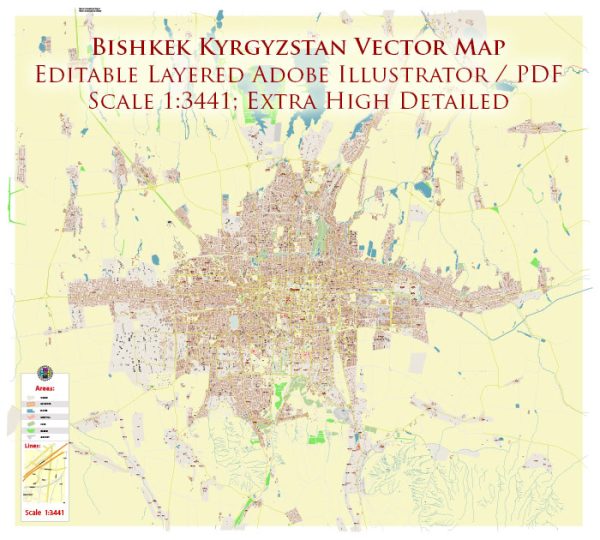Bishkek, the capital of Kyrgyzstan, has a rich history of urban development that reflects the region’s cultural and political changes over the centuries. The city’s history can be broadly divided into several key periods:
- Ancient and Medieval Periods:
- The area that is now Bishkek has a long history of human habitation dating back to ancient times. It was part of the Silk Road trade route connecting China and the Mediterranean.
- During the Middle Ages, the region was inhabited by various Turkic and Mongol tribes, and it was often a crossroads for nomadic peoples and traders.
- Russian Imperial Rule:
- In the late 19th century, the Russian Empire expanded into Central Asia, and the area around Bishkek came under Russian control. The city’s development began to take shape during this period.
- Bishkek was initially established as a Russian military outpost in 1868 and was known as Pishpek. It served as a transportation hub and a center for trade in the region.
- Soviet Era:
- After the Russian Revolution of 1917, the region came under Soviet rule. The city was renamed Frunze in 1926, in honor of the Red Army commander Mikhail Frunze, who was born in the city.
- During the Soviet era, Bishkek saw significant urban development, with the construction of industrial plants, infrastructure, and public buildings. The city’s layout and architecture were influenced by Soviet planning principles.
- The city became the capital of the Kirghiz Soviet Socialist Republic (now Kyrgyzstan) in 1926.
- Post-Soviet Independence:
- After the dissolution of the Soviet Union in 1991, Bishkek became the capital of the independent Republic of Kyrgyzstan. The city’s name was changed back to Bishkek.
- In the 1990s and early 2000s, the city experienced a period of rapid change and adjustment as Kyrgyzstan transitioned to a market economy and democracy.
- Modern Development:
- Today, Bishkek is a vibrant and diverse city with a mix of modern and Soviet-era architecture. It serves as the political, economic, and cultural center of Kyrgyzstan.
- The city has undergone numerous infrastructure improvements, including the development of parks, roads, and public spaces. New residential and commercial areas have been constructed, and the city continues to grow and evolve.
Bishkek’s urban development history reflects the region’s complex and multifaceted past, with influences from various cultures and periods. The city’s architecture and layout have evolved over time, and it remains a dynamic and important part of Kyrgyzstan’s cultural and political landscape.


 Author: Kirill Shrayber, Ph.D.
Author: Kirill Shrayber, Ph.D.